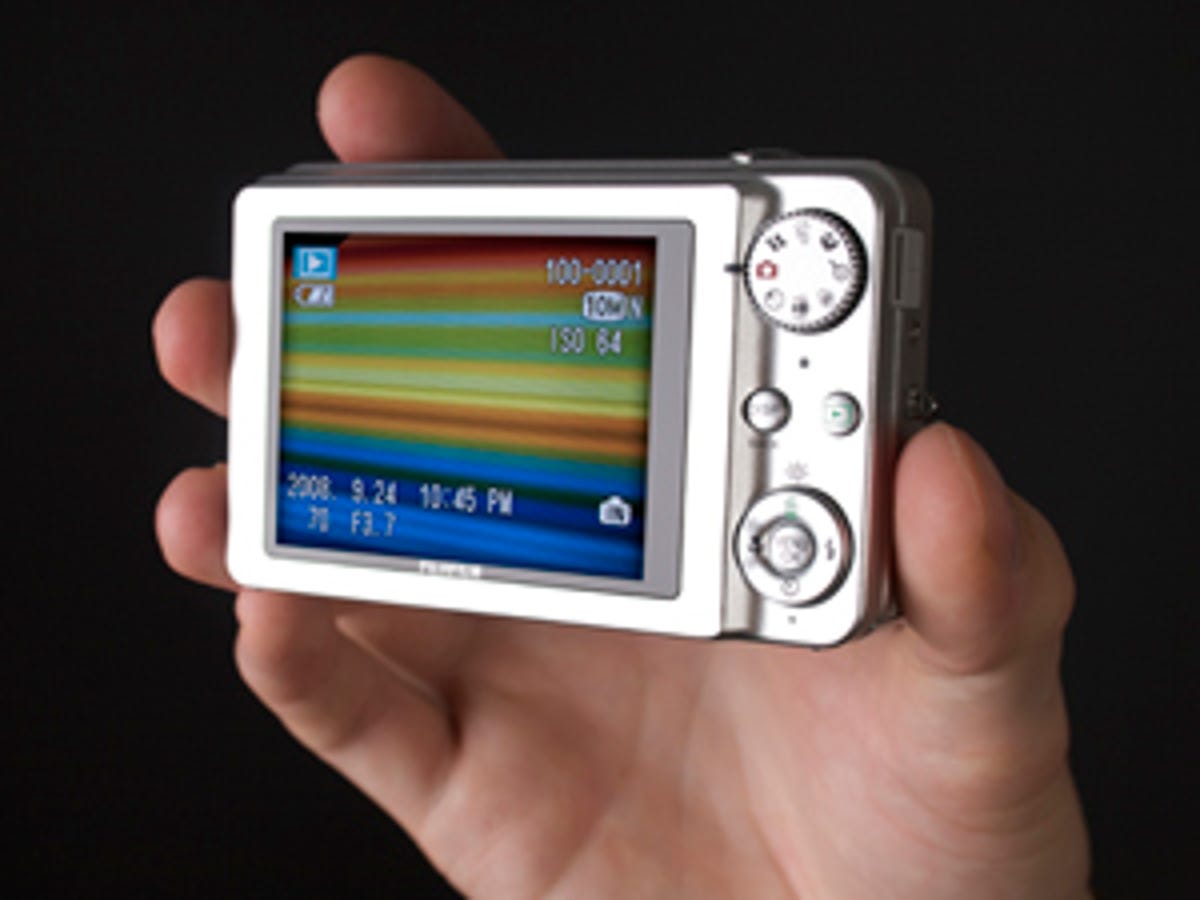 Why You Can Trust CNET
Why You Can Trust CNET Fujifilm FinePix J100 review: Fujifilm FinePix J100
The Fujifilm FinePix J100 is very simple. We'd even call it the consummate point-and-shoot, mainly because you can't do anything else with it. Despite a few quirks, this camera has a decent 5x zoom -- but one thing is for sure: the prominence of 'baby mode' suggests this isn't a camera for the party scene
The 10-megapixel Fujifilm FinePix J100 is described by Fuji as the "perfect family camera". That sort of description could mean one of two things: that it's a simple point-and-shoot, or it's a hideously under-specced snapper that's so short of features it borders on the patronising. Unfortunately, the £110 FinePix J100 is leaning towards the latter.
The Good
The Bad
The Bottom Line
Design
The J100 has a boxy shape, with rounded corners and bevelled edges giving it a retro, 70s look. It comes in matte black or brushed silver colours. Apart from the brushed metal effect at the front, there's not much in the way of styling. The fact that we thought, "Ooh, look at the curved lens opening," says a lot about how conservative this camera is -- at least for the silver model we tested. The black model has a touch more class.
At the rear there is a large 69mm (2.7-inch), 230,000-pixel LCD screen. The back has a stepped edge which may have been designed to minimise the camera's thickness, but to our eyes it draws attention to the camera's profile. While it's perfectly pocketable, it feels thick to us, mainly because of the size of the lens.
Though it sports a 5x optical zoom, the lens is not particularly wide -- 35mm -- at the wide end, which is equivalent to a 35mm film camera. The flash is a little close to the lens, which can lead to problems with red-eye.
Features
There's a simple mode wheel giving access to a number of scene modes. Although we understand the usefulness of quick access, several of these modes are basically the same: the red-eye reduction position doesn't give you any extra red-eye-related options other than the automatic mode. The point-and-shoot audience for this camera probably won't be changing the settings too much anyway.

The inclusion of 'baby mode' on the wheel shows that this camera is aimed at parents -- this feature warms skin tones, presumably to show Baby in the ideal light. Other scene modes include the usual portrait, as well as beach, party and fireworks, and all are accessible through the menus. Each is explained onscreen.
Face detection is included, but does place some restrictions on the other shooting options. Red-eye reduction is only available when face detection is on, while metering adjustment is also turned off when face detection is on.
Other features include video at 30 frames per second and playback slideshows. And, unfortunately, that's about it on the features front.
Performance
Images look reasonable as long as light is good. The 35mm wideangle lens may not be much to write home about in terms of width, but it's free of distortion or vignetting. Purple fringing was an issue in high-contrast shots, such as skylines, but not enough to ruin prints irredeemably. Colour is faithful enough, with nice warm skin tones, especially in baby mode.
Red-eye reduction is only available with face detection turned on. While this makes sense on the face of it -- as it were -- in practise the face detection struggles in low light. Even in decent lighting it isn't too fond of profiles either. Rather than waiting for the face detection to hunt around in the dark or for subjects to look your way, we tried turning it off -- and came out with photos blighted by red-eye.
There's no option to tweak the intensity of the flash, either, so the J100 may not be the best choice for dark, cramped conditions like nightclubs or parties, when subjects standing too close will be bleached into scary white-faced ghosts with glowing red eyes.
As on most compacts, image noise is the main problem, with shots taken at ISO speeds over 200 being speckled with gritty marks. In terms of low-light photography, you're stuck between the noisy rock and the harshly flash-lit hard place.
Conclusion
While we can't fault the Fujifilm FinePix J100, we can damn it with faint praise. It's the very definition of a point-and-shoot, simply because pointing-and-shooting are the only actual options available to you. Even for such a low price, it's a woefully unspectacular camera. For just a little more money you can pick yourself up a Sony Cyber-shot DSC-W170, a much more interesting 5x zoom, or a Casio Exilim EX-Z200, a point-and-shoot with a raft of features. Still, it's probably perfect for someone.
Edited by Marian Smith


